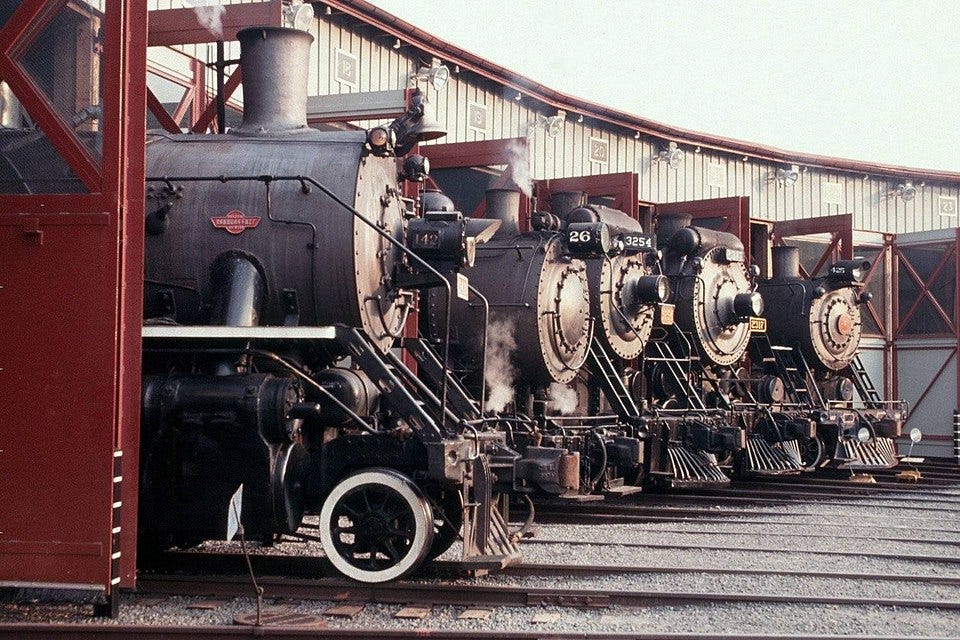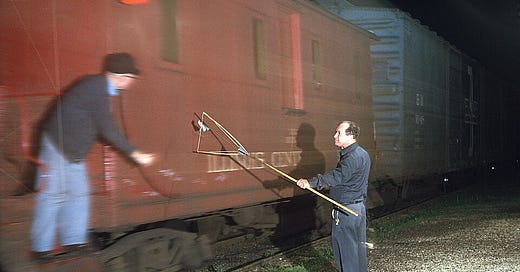The Whole Ball Of Wax
America’s vast network of rail lines tie together not only the eastern and western borders, but also those located along the country’s northern and southern edges. As a matter of fact, if not for the railroads, American history would need to be rewritten — and we’re talking in a BIG way!
For example, railroads and trains played a part in helping many of our cities and towns become established places on the U.S. map. The railroads were responsible for the creation of the different time zones. Therefore, understanding what part trains played in the development of the U.S. and in economic, political and social terms, and the role the railway laborer played in furthering that development, is crucial, not only as far as history is concerned, but also where the future of America may lie.
In recognition of the so-called “going-above-and-beyond” facet, the museums and preservationist groups are to be commended for their efforts in preserving America’s railroading’s past. Theirs is an oftentimes daunting task. Historical societies abound on the local, regional, national, and even, international levels. Societies such as the National Railway Historical Society and the Railway & Locomotive Historical Society, the two main railroad historical societies in the United States, are leading the way in the saving of thousands of railroad relics, artifacts and memorabilia, arguably more than any other, either in physical form, written word or by data entry. The work of these groups can be seen in the numerous railroad, trolley and traction museums that exist across the country and around the world.

The tourist railroad trade overall, meanwhile, is a thriving business and given that this is, it contributes its part as well. Typical tourist operations include Steamtown National Historic Site located in Scranton, Pennsylvania; the Sierra Railway in Jamestown State Historic Park in Jamestown, California; the Cumbres & Toltec Scenic and the Durango & Silverton both in the state of Colorado; just to name a few. How these operations manage to survive, is no small wonder. It takes a strong will, resourcefulness and in many cases, ingenuity not only to get these operations started, but to keep them going as well. Some tourist railroads lead a double life. When not transporting passengers, they’re handling freight.
A BIG SHOUTOUT! for all that museums, preservationist groups, tourist operations and railroad historical and/or technical societies do!
Finally, few Americans have more than a superficial understanding of the vast and varied world of railroading. For many, railroading is quantified in terms of the “How long will it take for this darned thing to clear the crossing?!” (or something to that effect), to “Is the train on time this time?” sort of mindset.(i) Meanwhile, to those of us who have a great familiarity with trains and what they represent, we are fast to recognize that this realm is one that’s both fascinating and exciting, something not to be missed for the world — nor taken for granted, ever!
(i) As we know, there are those who do not identify as “die-hard” train aficionados. Of those that don’t (the rest of the population), once getting their first real taste of what a true railroading adventure is all about, many will freely admit they “get it,” in other words, they see what it was they had been missing and perhaps in the process, gaining a deeper or greater appreciation of or respect for. An example where such might play out in real time is just such an individual riding a high-speed train for the very first time.
— Alan Kandel




